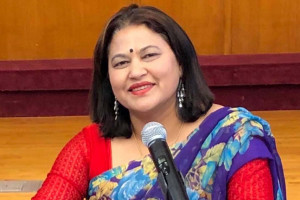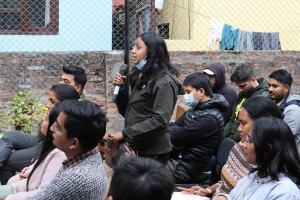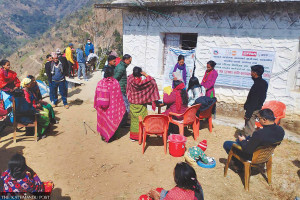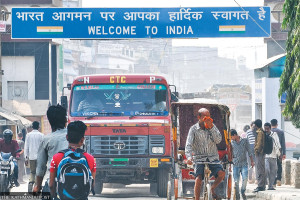 16.12°C Kathmandu
16.12°C KathmanduCulture & Lifestyle
Recipes from Maithili kitchens
Two grandmothers share traditional recipes for dal pithi, bagiya, thakuwa and litti chokha.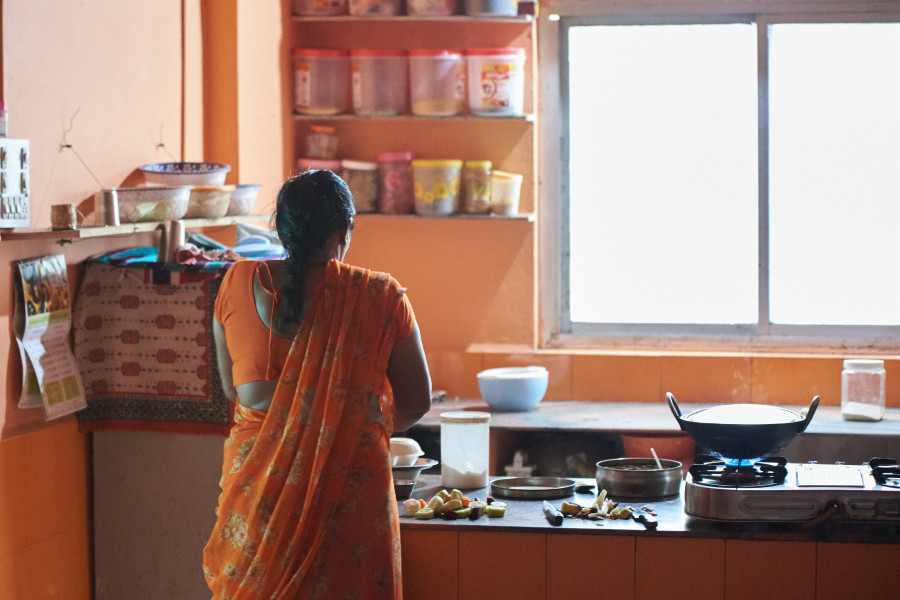
Aarati Ray
Sixty-five year old, Tetari Yadav, from Anarban, Mahottari, has been cooking since she was ten. She is known in her village for her excellent food. Nowadays, she doesn’t cook much; she only cooks sometimes when her grandkids make a fuss. Her twelve-year-old grandson, says food made by dai (grandmother in Maithili) is his favourite.
Tetari’s son says the whole family is excited when Tetari cooks. “Especially her dal pithi and bagiya are to die for,” he adds.
Tetari says as she has been cooking her whole life, she does find the chore boring and uninspiring these days, however, making dal pithi and bagiya are the exceptions to this.
Like Tetari, Gujuri Ray Amat from Khariyani, Janakpur, also likes making Mithila food. “Whenever I feel sick or anxious, I start cooking. Cooking heals all the pain for me,” says 70-year-old Gujuri.
Her daughter-in-law adds that even at this age, she has abundant energy for cooking. The family requests her not to cook all the time, worrying that she will get injured while cooking, but she never listens.
These two Maithili women teach the Post how to make some good Mithila dishes. Dal pithi and bagiya are Tetari’s recipes and litti chokha and thakuwa recipes are from Gujuri.
Dal pithi
Made up of lentil dumplings (pithi) in a tasty lentil soup (dal), this dish reflects the resourcefulness and creativity of people from Madhesh, turning basic ingredients into a delicious dish.
Ingredients
Half cup rahar dal
Half teaspoon of turmeric powder
One pinch hing (asafetida)
One cup of wheat flour
One teaspoon of ghee
One teaspoon of mustard oil
One dried red chilli
One teaspoon of mustard seed
Four garlic
Ginger
One green chilli
Two small onions
One large tomato
Salt
Water
Directions:
Firstly, put the dal in a pressure cooker. Add salt, turmeric powder and hing, add one and a half glasses of water, and cook it on high flame for two whistles and low flame for one whistle.
For the pithi, add salt and melted ghee to the wheat flour. Mix it well and prepare the dough, adding little amounts of water along the way. Make small balls of dough. Spread the balls like a roti and cut small, round, thin pieces with a steel glass. Then, take one cut piece and bring all three sides of the piece together to form a flower-like shape. Prepare all the pithis in the same way.
Check to see if the dal is cooked, and then add all the pithis into the daal with a bit of water. Close the pressure cooker and cook it on high flame for one whistle.
Now, start the masala mixture. Heat oil in a pan. Add dried red chilli and mustard seed. Stir it for two minutes, and add garlic, ginger and green chilli. Cook for two minutes. Add onion and tomato and cook till they become soft. Add salt and chilli powder. Now, add the cooked dal pithi to the masala mixture, mix well, cover and cook for two to three more minutes.
Add coriander leaves and ghee to enhance the flavour. Serve hot.
Bagiya
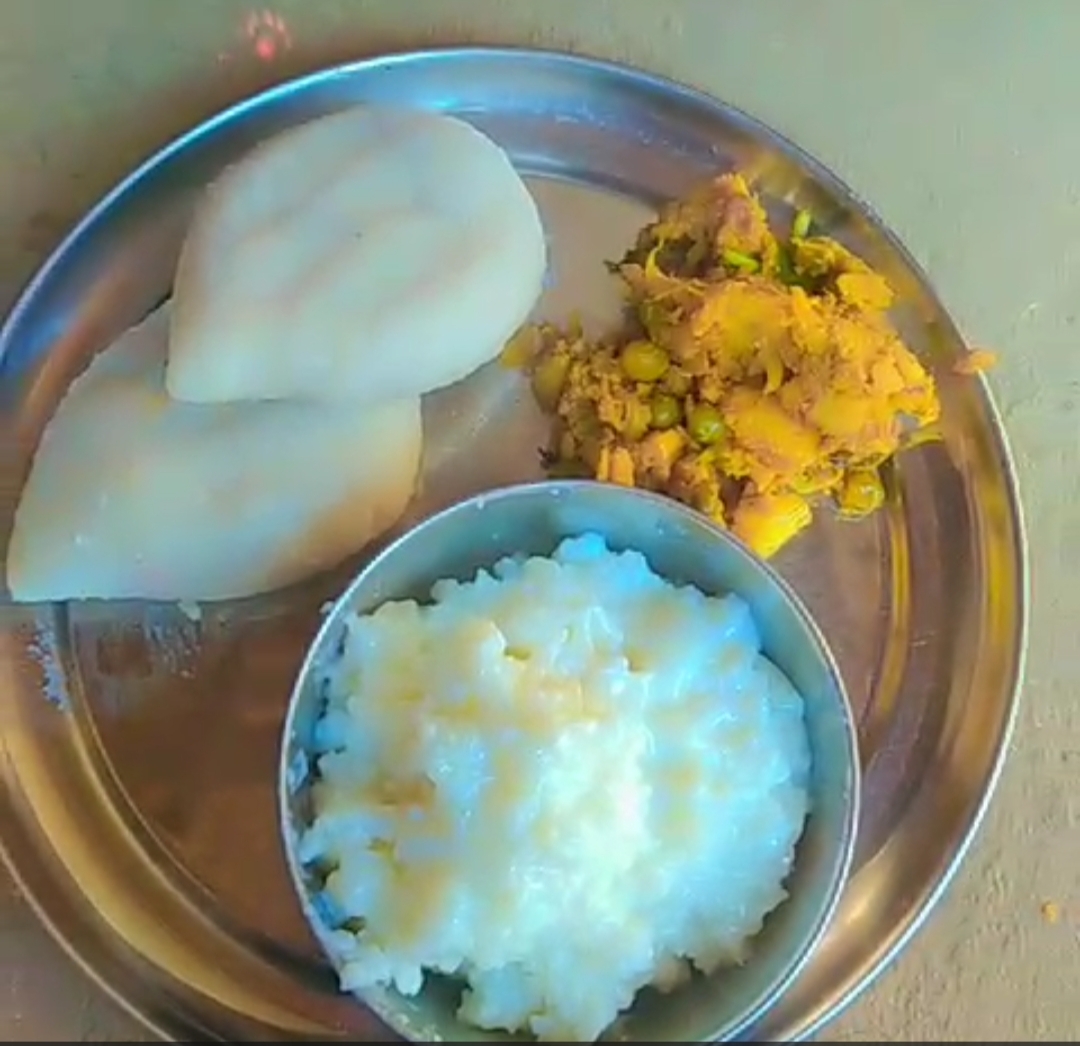
When winter arrives, the smell of Bagiya wafts in many homes in Tarai. For a long time, bagiya has been a special and loved dish in the Maithili and Tharu communities. People enjoy it in sweet and savoury styles, especially during the month of Magh. The dish is made with flat rice flour that has ends sticking out. It is usually filled with the likes of lentils, spices and boiled potatoes.
Ingredients
500 gm of rice flour
One teaspoon of cooking oil
Half teaspoon of asafetida
One teaspoon of cumin
Half teaspoon of black mustard seed
Chopped garlic
10 green chillis, chopped
Chopped onions
Chopped ginger
Five to six curry leaves
One teaspoon red chilli powder
One teaspoon of garam masala
One or two pieces of lemon
500 gm boiled potatoes
100 gm peanuts
Water
Directions
Pour a litre of water into a wok. Add rice flour and boil till the water dries up.
Peel the boiled potatoes and smash them.
Put oil in a frying pan. Add asafetida, cumin, black mustard seed, chopped garlic, green chilli, and stir. Fry for two minutes, and then add chopped onions. Fry again till it turns brown. Add chopped ginger and curry leaves. Mix red chilli powder, garam masala and salt, squeeze some lemon juice on top and fry everything again for a minute or two.
Add smashed potatoes to the mixture, along with coriander leaves and crushed peanuts, and leave it to cool down.
Make dough from the flour. Make small balls from the dough. Wrap the above-mixed mixture in the ball and roll it into an oval shape. Do the same till use up all the mixture. This is your (uncooked) bagiya.
Put the bagiya in a bowl. Add two litres of water and boil well. Then, take the bagiya out and put it into cold water. Once it cools down, bagiya is ready to eat with green chutney.
Thakuwa
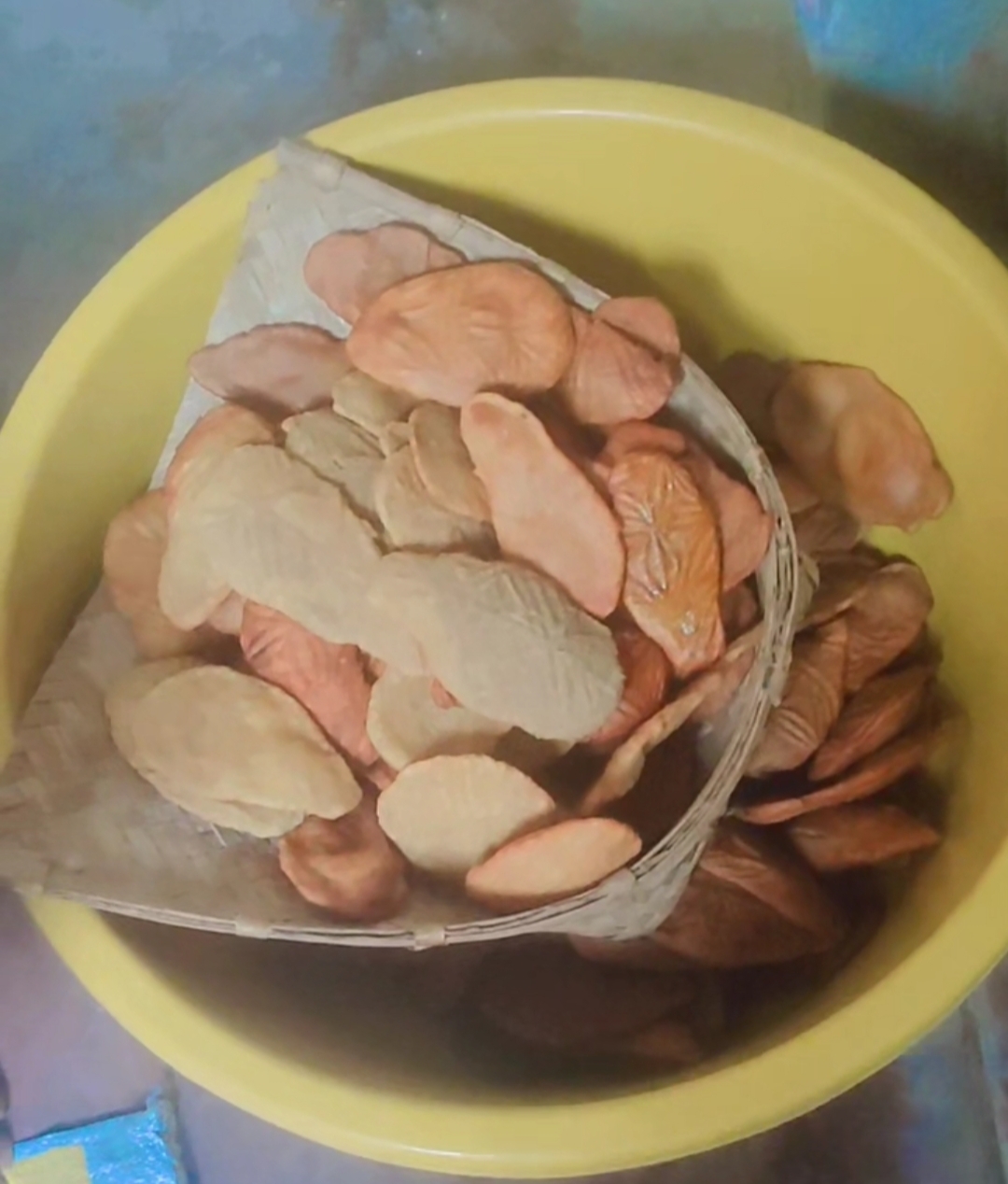
Thakuwa, also known as thekuwa or thokni, is a traditional Indo-Nepali cookie popular in the Indian states of Bihar, Uttar Pradesh, and the Tarai region of Nepal. The sweet is especially important during Chhath festivities as it is offered as a sacred gift to Lord Surya and Chhathi Maya on the third day of the festival. Generally, when thakuwa is given out as prasad, it marks the end of the Puja.
Ingredients
One cup of wheat flour
Half cup all-purpose flour
One-fifth of a cup of suji (semolina)
One-fourth of a teaspoon of cardamom powder
Two teaspoons desiccated coconut
One-fourth of a cup of ghee
One-fourth of a teaspoon of sugar
Water
Directions
Mix wheat flour and all-purpose flour. Add suji, cardamom powder and desiccated coconut. Mix well, and add ghee. (Make sure you use ghee in this recipe and not oil, as it makes your thakuwa tastier.) Mix till the ghee blends with everything else.
Add sugar and dough to a bowl and sprinkle some water. Knead this well. Grease the mould of thakuwa with ghee. Then, make some small dough. Press the small dough onto the mould, and beautiful designs will imprint on your dough.
Heat more oil or ghee in a pan. Drop a small piece of dough to check the temperature; the temperature is perfect if it starts floating in the oil. Put three to four thakuwa at a time, and fry on a low-medium flame till it turns golden brown.
Your thakuwas are ready. You can store them in an air-tight jar and enjoy them for upto three weeks.
Litti chokha
Litti chokha is a popular traditional dish in Mithila—especially in the Dhanusha and Siraha districts. Litti are round wheat flour balls stuffed with sattu (roasted gram flour) and various spices. They are typically baked or grilled until they turn golden brown. Chokha, on the other hand, is a side dish made by mashing roasted vegetables like eggplant, tomatoes and green chillies.
Ingredients
Three cups wheat flour
Three teaspoons ghee
One teaspoon of crushed cardamom
One-fourth of a teaspoon of baking soda
One eggplant (about 300 gm)
Two to three tomatoes
One cup sattu
Salt
One teaspoon of grated ginger
Green coriander
Two green chillies, chopped
One teaspoon of mustard oil
Lemon Juice
One onion, chopped
Four to five cloves of garlic, chopped
300 gm boiled potatoes
Directions
Take wheat flour in a mixing ball and add ghee, salt, crushed cardamom and baking soda. Mix well. Add water in small portions and knead the dough till it turns soft. Cover and set the dough aside to set for 20 minutes.
For chokha, grease the eggplant with oil and roast it on a gas flame. Grease and roast the tomatoes similarly. Flip both at regular intervals and take them off the flame when their peels turn black. Let them cool down.
To make the stuffing of litti, add sattu, salt, grated ginger, green coriander, mustard oil, chopped green chillies, lemon juice, onion and chopped garlic to a bowl. Add about two teaspoons of water and mix well.
Add the peeled boiled potatoes, roasted tomatoes and eggplant to a bowl. Crush them together. Add salt, green chilli, ginger, coriander, mustard oil and lemon juice. Mix everything together. Chokha is ready.
Now, break the dough into small lumps. Press and shape it like a bowl. Put the stuffing in, and close and round it out. Prepare all the littis alike.
To roast the litti, grease a wok with a teaspoon of ghee. Keep the wok in medium flame. Put the littis to roast and cook it on low flame for three to four minutes. Roast them until they turn golden brown on all sides.
Litti chokha is ready. Put littis in a plate and some chokha in a bowl and serve.
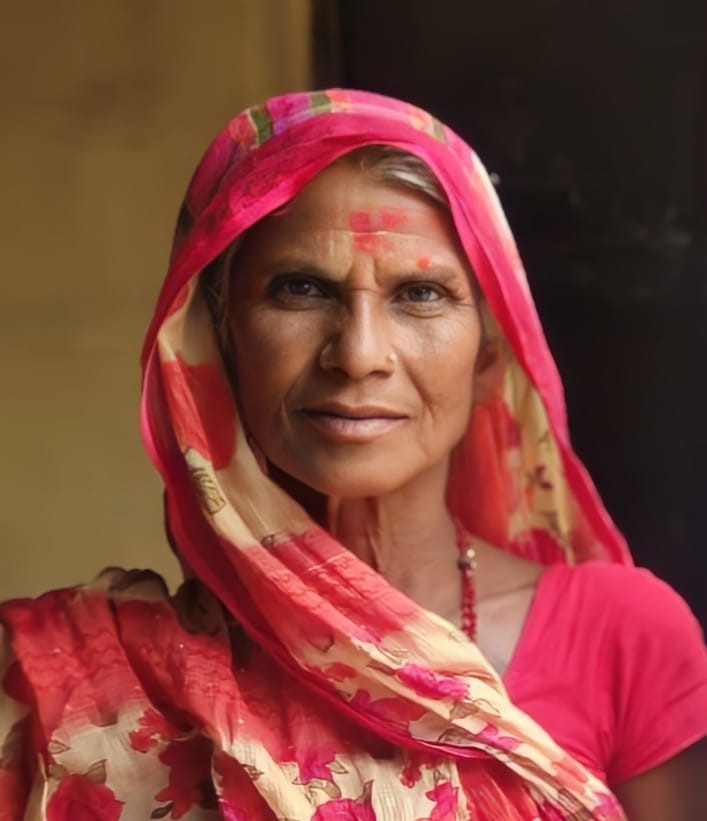








.jpg&w=200&height=120)





